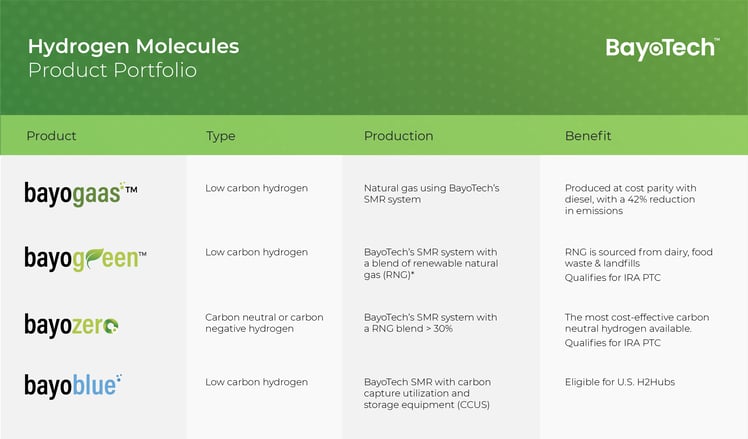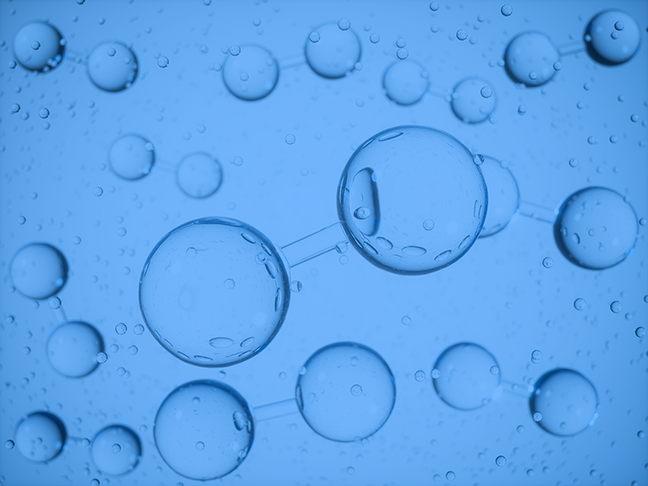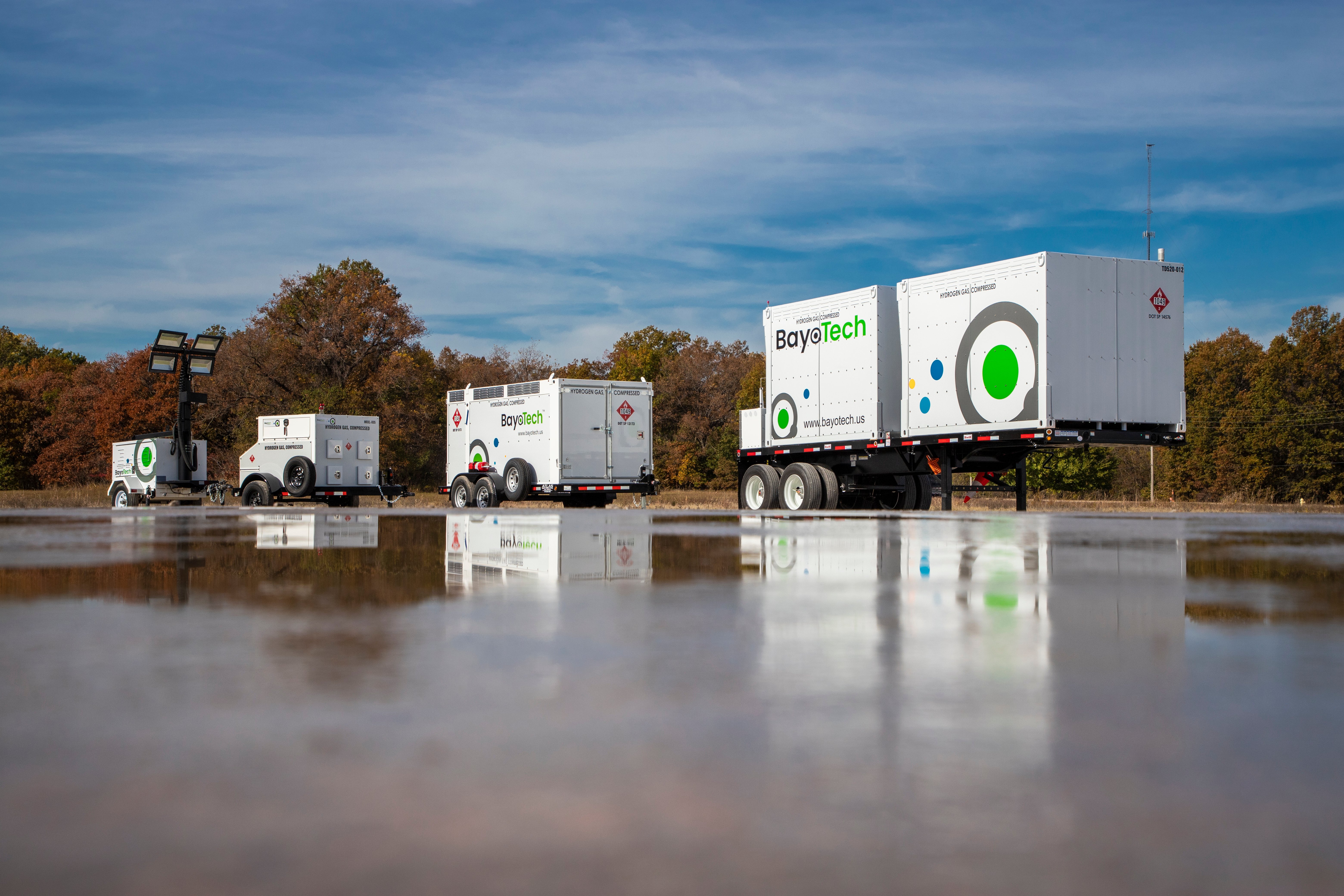The Inflation Reduction Act (IRA), signed into law by President Biden on August 16, 2022, authorized $391 billion in spending on energy and climate change as part of a $738 billion overall package. The Environmental Protection Agency called the IRA “…the most aggressive action in tackling the climate crisis in U.S. history.”
A vital element of the IRA is a package of hydrogen production tax credits (PTCs) designed to stimulate clean hydrogen production and consumption and spur innovation in the sector.
To better understand the implication of the IRA and PTCs for the hydrogen industry, I spoke recently with Gabriel (Gabe) Olson, Director of Carbon Strategy and Sustainability for BayoTech. With BayoTech’s hydrogen products BayoZero and BayoGreen now qualifying for the IRA PTC, Gabe leads the company’s initiative to navigate and utilize the complex array of carbon credits and incentives.
.jpg?width=299&height=386&name=G%20Olson%20(1).jpg)
Gabriel Olson, Director of Carbon Strategy and Sustainability at Bayotech
Tim: Gabe, tell us a bit about yourself and the role you’re playing with BayoTech around the IRA.
Gabe: I assist BayoTech’s commercial development team, helping them employ carbon credits in support of project development. I have worked over the last two decades in environmental consulting, compliance, energy and sustainability work with infrastructure, transportation and energy utilities. I’ve been with BayoTech for the last year, and I can say that the recent passage of the Inflation Reduction Act is a huge milestone for us, and the hydrogen industry at large.
Because the Inflation Reduction Act is brand new, we’re learning as we go. BayoTech is providing input to the Treasury Department and the IRS as part of a rules-based process to determine how all these things will be accounted for and what must be done to verify things like the sources of hydrogen, the end uses, and total carbon intensity. It’s a complicated process and the government needs industry input.

Tim: Can you tell us more about the IRA and how it relates to the work you’re doing?
Gabe: There are many people in legislative and regulatory circles pushing to accelerate the use and production of hydrogen. The IRA includes a whole swath of different incentives and subsidies, including the Production Tax Credit, for alternative fuels like hydrogen and renewable electricity. That’s why we’re involved.
The PTC provides up to $3 per kg of hydrogen produced for clean, basically near or zero-carbon intensity hydrogen. That's significant price support to incentivize investment in production facilities around the US. It's never been done before at this scale, and it's a game-changer for all forms of hydrogen that are increasingly clean in low carbon.
Image Source: Fuel Cell & Hydrogen Association
Tim: How do you get to zero carbon intensity with hydrogen?
Gabe: We can get there in a few different ways. One of the exciting opportunities is the use of renewable natural gas (RNG), or biogas as it's commonly called, to produce hydrogen using steam methane reformation (SMR).
For the end user, RNG is identical to fossil natural gas. If you substitute the fossil natural gas with RNG you can effectively eliminate the carbon content of the feedstock going into your hydrogen and produce either low carbon, carbon neutral, or even carbon negative hydrogen. This is a huge opportunity for the growth of low carbon hydrogen fuels.
Tim: Where does RNG come from? How viable is it for the hydrogen industry?
Gabe: It’s sourced from a variety of biogenic, or organic sources, like manure from dairy farms or swine operations. It also comes from municipal wastewater treatment, food waste and solid waste landfills. Much of that methane would normally escape to the atmosphere. Remember that methane is a very potent greenhouse gas, up to 25 times that of carbon dioxide, so capturing it adds another element of carbon reduction.
There are studies showing RNG can potentially provide 30% of the total natural gas supply by 2040 compared to less than 1% today.
As for viability, RNG costs more than traditional fossil gas right now. But you don't have to use 100% RNG to make a significant carbon difference. You can blend it with fossil gas. Using around 30% RNG allows you to reach zero carbon intensity hydrogen, depending on the source of the RNG. The greater your blend of RNG, the lower the carbon intensity.
Tim: How would you incorporate RNG into your existing production stream?
Gabe: In theory, if we were located near an RNG producer, we could source the actual molecules directly from that facility. But that’s rarely the case. In reality, BayoTech won't actually buy RNG molecules. We’ll buy credits using “book and claim,” which is an accounting mechanism for taking the environmental attributes, or carbon credits associated with the RNG in one location, accounting for how much RNG that location produces, and selling those credits to someone who needs that resource in another location such as another state, or even internationally between Canada and the U.S. It pretty much works out to be the same thing at the end of the day, but allows geographic flexibility for both upstream and downstream market participants.
Tim: What are the most viable markets for hydrogen produced from RNG?
Gabe: Transportation and off-road vehicles (i.e. material handling and goods movement) are seen as a promising early-adoption market for hydrogen fuel cell technology, transitioning away in particular from diesel in the heavy-duty trucking market. Simply by making the switch from diesel internal combustion engines to hydrogen fuel cell engines, vehicle operators reduce emissions by 40%. Using RNG takes the carbon intensity even lower.
Tim: How does hydrogen from RNG compare with diesel for cost?
Gabe: One of the primary points of the PTC is to narrow the cost gap between diesel and hydrogen to accelerate that transition and make it viable. If you look at the production of hydrogen, and you include the hydrogen PTC subsidizing the cost, that net price gets closer to parity with the current cost of diesel. This will get more people entering the market and help drive the price down through increased competition and overall supply.
Tim: Where will BayoTech fit into this transition?
Gabe: We know from feedback that many customers are starting to look for carbon neutral or even carbon negative hydrogen. In the context of their broader sustainability portfolio, if the pricing makes sense, they’ll make that transition. So we’ve developed two hydrogen products that qualify for the IRA PTC by employing blends of RNG. One is BayoGreen, a low carbon hydrogen produced by fueling BayoTech’s SMR system with a specified blend of RNG, optimized to customer needs. The other is BayoZero, which is carbon neutral hydrogen using up to thirty percent RNG.

Tim: Gabe, thanks for the great insight today. You have some interesting and rewarding work ahead of you, especially working with the Treasury Department and IRS and establishing BayoGreen and BayoZero in the hydrogen market. Where can people find more information?
Gabe: It has been a pleasure. For info about the IRA as it relates to PTCs for hydrogen, I’d read this article from the Utility Dive news site, and also this perspective from a leading energy law firm. You can learn more about BayoGreen and BayoZero here on our website. Also, here’s an excellent summary of how the tax benefits work.





